Water pollution

Young child drinks clean water in Cambodia. Photo by Cecilia snyder, taken on 12 July 2003. Licensed under CC BY-NC-ND 2.0Water pollution can be defined in many different ways. Basically, it is the contamination of water when pollutants are discharged into water bodies without treatment ss='cambodia-color'>...
Land
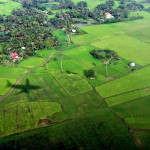
Aerial view of Cambodia paddy rice field. Photo by Sai Kwong, taken on 23 October 2010. LicenSed under CC BY-NC 2.0.Land lieS at the center of debateS about Cambodia&rSquo;S Socioeconomic development. For farmerS in the fertile lowlandS, private land ownerShip rightS have enabled recovery of SS='cambodia-color'>...
Private non-profit development assistance
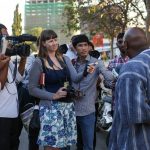
Maina Kiai speaking with journalists outside the Ministry of Foreign Affairs in Phnom Penh. Photo by Maina Kiai, taken on 6 February 2014. Licensed under CC BY 2.0The first humanitarian international non-governmental organizations arrived in 1989. After the 1993 election, more and more internal organizations ss='cambodia-color'>...
Private land
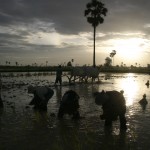
Rights to private land ownership were guaranteed in the 1993 Constitution and formally established by the 2001 Land Law. Despite an established legal framework to protect private property rights, those rights are often insecure for many. ss='cambodia-color'>...
Environmental and biodiversity protection
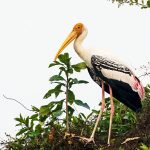
Cambodia is one of the most biodiverse countries in southeast Asia. Biodiversity supports Cambodians ecologically, economically and culturally. It plays an important role in providing ecosystem services and economic development to achieve the Cambodian Millennium Development Goals including poverty reduction. ss='cambodia-color'>...
Banking and financial services
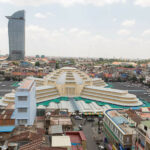
According to the Annual supervision report 2020 by the National Bank of Cambodia (NBC), the key bodies in the banking system consists of:51 commercial banks12 specialized banks75 microfinance non-deposit taking institutions6 microfinance deposit-taking institutions245 rural credit institutionsIn addition, there are financial leasing companies, third-party processors, ss='cambodia-color'>...
Parliament

Upon the reinstatement of the second monarchy in 1993, Cambodian citizens are the master of their destiny and sources of all power. With the introduction of the liberal democracy in the Kingdom, all Cambodians at their 18 years or over, except where it is prescribed ss='cambodia-color'>...
Garments and textiles
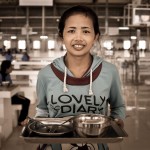
The garment industry has rooted in Cambodia earlier than the footwear industry. As a result of trade privileges given by the U.s. and EU, both industries have blossomed. As of 2013, the garment and footwear industries were accountable for about 80 percent of Cambodia’s total ss='cambodia-color'>...
Law and Judiciary

National Assembly of Cambodia. Photo by sorn seang Heng, taken on 12 June 2010. Licensed under CC-BY 2.0.With a constitution written a little more than 20 years ago, the current rule of law in Cambodia is relatively new, and continues to be shaped by many ss='cambodia-color'>...
Non-renewable energy production
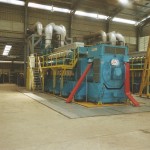
Non-renewable energy sources are chiefly fossil fuels such as coal, diesel, oil and gas. They provide most of Cambodia’s locally-produced electrical supply – in 2011 diesel and heavy fuel oil generators provided 89% of local electricity generation. ss='cambodia-color'>...
Social land concessions
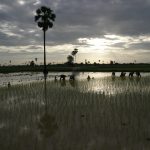
Social land conceSSionS (SLCS) are intended to provide to the landleSS or land-poor land on which to eStabliSh reSidenceS and/or generate income through agriculture. The Cambodian Government that more than 30,000 houSeholdS have received land aS Social land conceSSionS. DeSpite itS pro-poor intention, the SLC SS='cambodia-color'>...
Animals

Cambodian animals are state property under Article 48 of the Forestry Law of 2002. This places the Forestry Administration (FA) in charge of research programs and conservation duties. The FA carries this out through its Department of Wildlife and Biodiversity. Conservation programs in the field ss='cambodia-color'>...
Marine and coastal areas
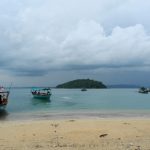
In terms of attractiveness, one of Cambodia’s assets is the relative absence of intense development along its coasts, in comparison with neighboring countries. The 440 kilometer-long coastline includes a large area of non-urbanized zones, where locals can make their livelihoods from coastal resources. Cambodia’s coastline ss='cambodia-color'>...
Oil transport
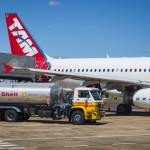
Despite having both onshore and offshore oil discoveries in the country, Cambodia does not produce oil and has been importing petroleum products from Vietnam, Thailand and singapore. The Cambodia Trucking Association (CAMTA) says it controls around 70% of the Kingdom’s transportation. ss='cambodia-color'>...
Concessions
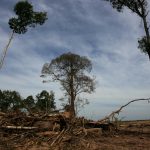
A land concession is a grant of rights over an area of land for a specific purpose. In Cambodia land concessions can be granted for various purposes, including agribusiness, redistribution of land to the landless and land-poor, infrastructure development, mining and fishing. They have been ss='cambodia-color'>...
Pandemics

Pandemics are disease epidemics that spread from person to person as a result of human-to-human transmission. Many medical texts do not define the term “pandemic”. However, some key characteristics of pandemics, including wide geographic spread, disease movement, novelty, severity, high attack rates and explosiveness, minimal ss='cambodia-color'>...
Labor arbitration
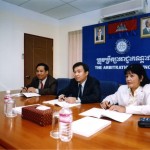
Arbitration Council in session, Cambodia. Photo by ILO (Asia and the Pacific), took on 8 June 2012. Licensed under Attribution-NonCommercial-NoDerivs 2.0 GenericThe Arbitration Council was established by the 1997 Labor Law. However, the Arbitration Council just opened its doors to serve employers, employees, workers and ss='cambodia-color'>...
Securities exchange (stock market)
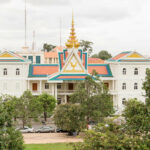
Starting from 2001, work began on promoting the formation of a Cambodian Stock Exchange (CSE or CSX) aS a meanS of Supporting the economic SyStem in Cambodia&rSquo;S development. A Stock exchange facilitateS the buying and Selling of StockS among inveStorS. Dr. Bit Seanglim, Chairman of SS='cambodia-color'>...
Landmines UXO and demining
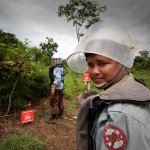
Cambodia is one of the countries most affected by land mines and explosive remnants of war as a result of its tumultuous history. The country is working with a variety of partners to demine the country by 2019. ss='cambodia-color'>...
Industries
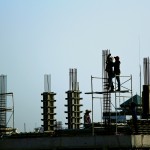
Industries in Cambodia (excluding extractive industries and mining) are mostly within the garment, light manufacturing, agricultural, construction and tourism sectors. The Royal Government of Cambodia has set directions to transform Cambodia into a middle-income economy by 2030 and high-income country by 2050, as mandated in ss='cambodia-color'>...



